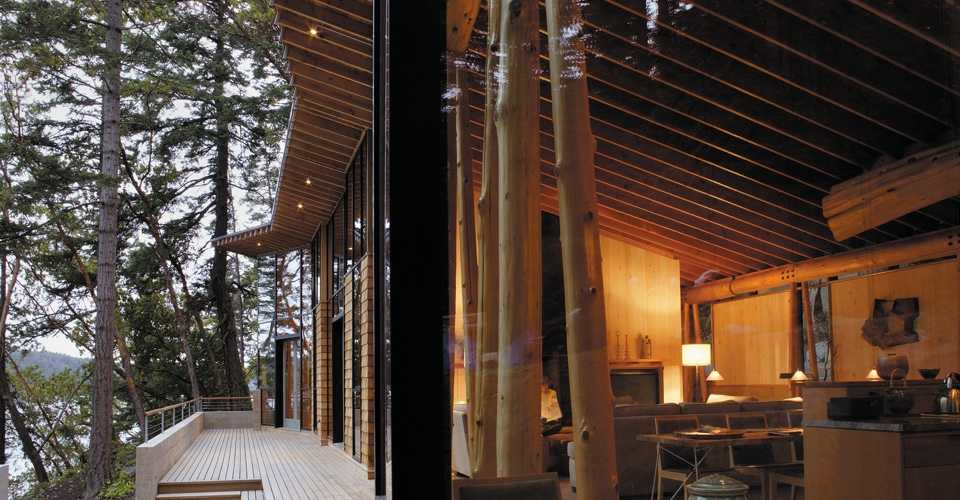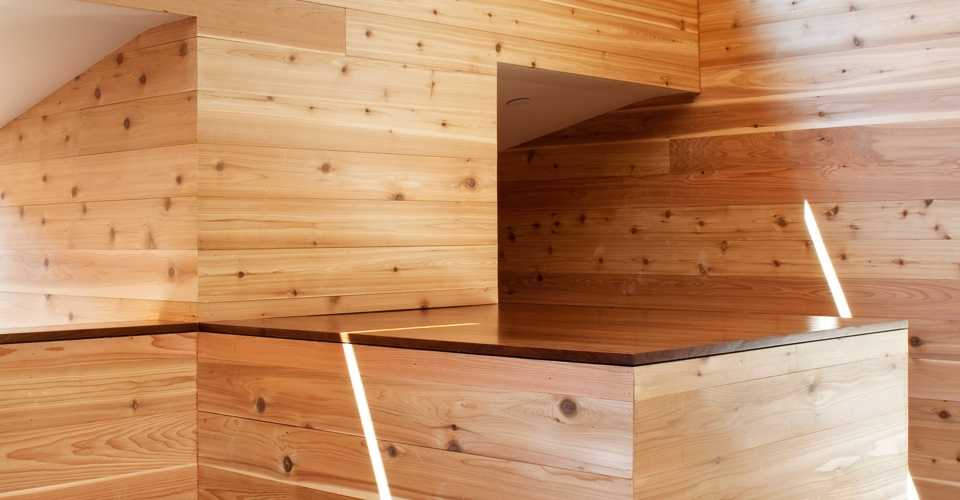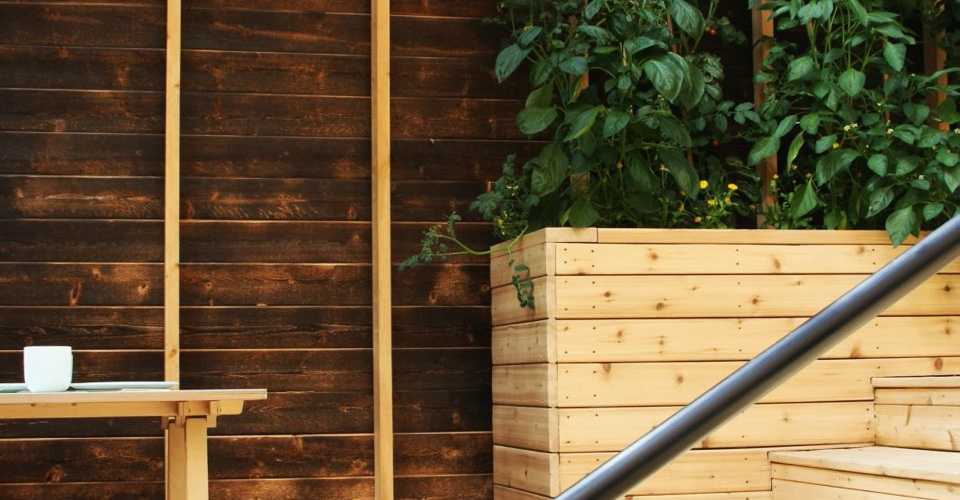Back
Back
Back
Back
Back
Back
Back
Back
Back
Back
Back
Back
Back
Back
Back
Back
Back
Back
Back
Back
Back
Back
Back
Back
Back
New Zealand
Sustainability and the Environment
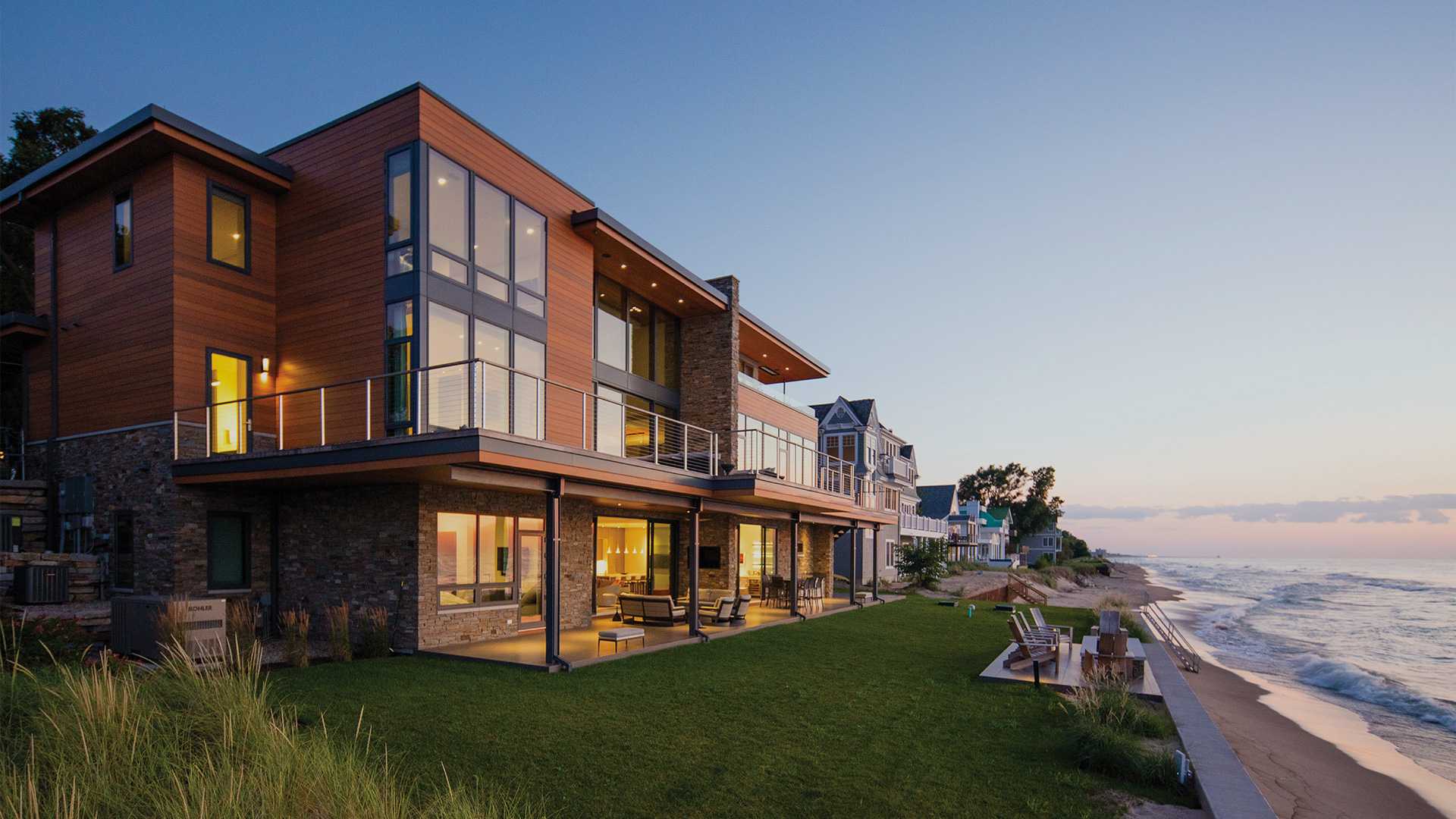
Western Red Cedar And The Environment
Western Red Cedar is renowned for it’s beauty and durability, but what about it’s environmental impact? When homeowners choose natural wood, they’re actually doing the planet and their pocketbooks a huge favor. Here’s why.
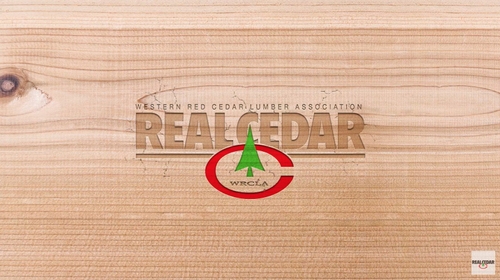
In this section
Table of Contents
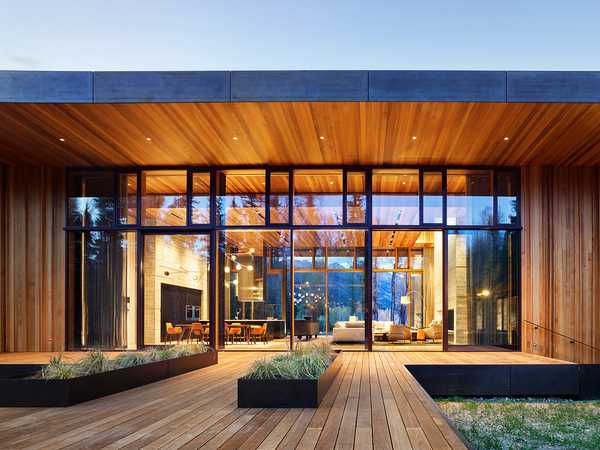
Environmental Benefits
Environmental Benefits Of Western Red Cedar
 Okay, so Real Cedar boasts greater beauty and more versatility than man-made materials – few would argue that point. But, looks alone don’t paint the entire picture. There are many other beneficial considerations to factor into your decision-making process. You might want to consider, for example, that when homeowners choose natural wood over synthetic substitutes, they’re actually doing the planet and their pocketbooks a huge favor. That’s because independent studies have determined that wood outperforms steel, concrete and composites in the following categories:
Okay, so Real Cedar boasts greater beauty and more versatility than man-made materials – few would argue that point. But, looks alone don’t paint the entire picture. There are many other beneficial considerations to factor into your decision-making process. You might want to consider, for example, that when homeowners choose natural wood over synthetic substitutes, they’re actually doing the planet and their pocketbooks a huge favor. That’s because independent studies have determined that wood outperforms steel, concrete and composites in the following categories:
Energy Expenditure
Wood products require much less energy to produce than concrete or steel – that’s according to an independent study that compared how much energy is needed to obtain, manufacture, transport and install building materials for identical wood frame, steel frame and concrete houses. These findings prove, once and for all, that wood is environmentally superior to alternative materials. Additionally, wood possesses naturally occurring thermal properties, so it saves even more energy (not to mention money) when it comes to heating and cooling homes.
Recycling Capabilities
As the world’s only renewable building material, wood can not only be recycled, but regenerated as well. In fact, lumber producers have been replacing harvested trees so diligently in that last few decades that North American forests have actually grown 20% since 1970. Man-made materials, on the other hand, cannot be broken down or renewed and the only things they help grow are landfills and ozone holes.
Environmental Impact
Wood-product manufacturing produces far fewer toxins and greenhouse gases than the leading man-made materials. Which means wood has the lowest impact on air and water quality. This is especially true when compared to the manufacturing of recycled steel. Furthermore, forest regeneration also creates more trees, which benefit the environment while they grow because they take in carbon dioxide and release oxygen.

To learn more, please visit our Resource Library and download the Go Green brochure.
Reducing Energy Use During The Building Service Life
One third of the energy used in North America is used to heat, cool and operate the buildings we live and work in. As most energy is produced from non-renewable fossil fuels that produce greenhouse gases, reducing energy use in a building will lower its environmental impact. This can be accomplished by low energy lighting, passive ventilation systems, and minimizing a building’s heating and cooling needs. The materials and construction of a building have a significant impact on the last category: minimizing heating and cooling needs.
Wood has very good insulating value compared to other materials. Laboratory tests conducted at the National Research Council of Canada and the Oak Ridge National Laboratory show that light metal framing significantly reduces the effective thermal resistance, or R-value, of a wall assembly resulting in increased energy use (Figure 1). Wood-frame construction is easy to insulate to high standards. In fact, several wood-frame assemblies have been designed for the Arctic.
Wood-frame construction can easily be adapted to any energy code requirement. This means wood frame houses, offices, schools, and other commercial and industrial buildings can keep energy usage for heating and cooling low.

For more detailed information on the energy efficiency advantages of wood, see the article The Thermal Performance of Light-Frame Assemblies.
Minimizing External Pollution And Environmental Damage
 In evaluating the environmental impact of building design, the impact on the quality of air, water and soil must be taken into consideration. This includes not only minimizing waste products from the building, such as wastewater, solid wastes and chemicals, but also minimizing the pollution caused by the manufacture of the materials used in the building.
In evaluating the environmental impact of building design, the impact on the quality of air, water and soil must be taken into consideration. This includes not only minimizing waste products from the building, such as wastewater, solid wastes and chemicals, but also minimizing the pollution caused by the manufacture of the materials used in the building.
It is difficult, however, for designers to determine whether the materials they choose cause air or water pollution during their extraction, manufacture and transportation to the site as these occur away from the project. Designers may be aware that concrete manufacture creates CO2 emissions and that steel manufacture results in toxic chemicals being released into the water, but are not aware of a means to evaluate these effects. Life cycle analysis is an emerging science that evaluates and allows designers to compare the effect that materials have on the environment over their lifetime.
In Canada, the ATHENA™ Sustainable Materials Institute has developed databases and a computer program to evaluate the environmental impacts of whole buildings and building assemblies. In the US, the federal government has funded the first phase of a project, led by the ATHENA™ Sustainable Materials Institute, to develop a life-cyle inventory for a range of materials including building materials and products. The second phase of the project is now getting underway.
ATHENA™’s life-cycle research proved what designers knew intuitively, and what has been demonstrated in comparable work in Europe: when it comes to minimizing external pollution of air, water or soil, wood far surpasses other materials. The research demonstrated that using wood results in:
- lower greenhouse gas emissions than steel or concrete
- lower air pollution than steel or concrete
- lower water pollution than steel or concrete
- lower solid waste by-products than steel or concrete
The next section, A Life Cycle Approach to Building Design, provides further explanation about life cycle analysis and how wood building products have the lowest environmental impact when compared to other major building materials.
Reducing Embodied Energy And Resource Depletion
Embodied energy includes all energy, direct and indirect, used to extract, manufacture, transport and install materials. This principle aims to lower the energy used, not only during service life, which tends to be in the control of the designer, but also for producing the materials. This is another area where life-cycle analysis can provide the research required for informed choices.
The manufacture of wood uses very little energy so, even though it may be brought to the building site from outside the area, the embodied energy will normally be less than locally manufactured concrete. Life-cycle comparisons demonstrate that wood has low embodied energy and is an excellent choice to meet this principle.
This principle also encompasses reducing the depletion of resources by minimizing the amount of resources used and, in particular, the amount of non-renewable resources used.
Wood is the only major building material that is renewable. Canada’s sustainably managed forests ensure that there is an ample supply. New manufacturing technology allows every part of the tree to be used so that nothing is wasted. Advanced engineered wood products make use of fast growing species to produce high strength products without requiring large dimension timbers to meet building needs. In addition, engineered building systems, such as trusses, allow larger clear spans while reducing the amount of material required.
Wood is also durable which means that the materials will last for a long time and not need to be replaced. Churches in Norway and temples in Japan have lasted over a thousand years. In North America, there are many examples of historic wood buildings from the 16th century that are still standing. Even the foundation of the Empire State Building rests on wood piles!
In fact, not only does wood last, but there are many examples of new buildings that have used wood reclaimed from decommissioned buildings. This is the ultimate in reducing the consumption of materials, but even the use of new wood gives it a significant advantage over other materials. Wood is the only major building material that is renewable – a reason why Canada’s forest base is still abundant after 150 years of harvesting. Wood is natural, biodegradable, recyclable, and originates from Canada’s sustainably managed forests.
Minimizing Internal Pollution And Damage To Health
 This green building principle deals with the health of the indoor environment.
This green building principle deals with the health of the indoor environment.
Wood is a natural material and wood construction has over a century of proven performance. It can serve a functional application (structural) and also often serves as a finish material because of its aesthetic appeal. For example, timber frame construction offers amazing architectural potential and wood flooring is renowned as a feature that wears well and minimizes the accumulation of dust and microbes. And the engineered wood products used for sheathing and for beams and joists are made with glues that don’t contribute to allergies.
Green building rating systems are being applied more and more. Wood is a naturally occurring and renewable material that excels under the scrutiny of green building review. Canadian wood measures up to the requirements and comes out the winner in all aspects when compared to other materials. Wood reduces energy use, minimizes external and internal pollution and is the only material that comes from a sustainable resource. Wood is the natural choice for building environmentally safe and secure homes and buildings.
For more information:
Environmental Building News
www.buildinggreen.com
Canadian Wood Council
www.cwc.ca
LEED™ (Leadership in Energy and Environmental Design) Green Building Rating System
www.usgbc.org/LEED/LEED_main.asp
Facts About Western Red Cedar
Real Green Facts
Get The Real Green Facts About Real Cedar:
- Building with Real Cedar actually helps reduce greenhouse gasses. Cedar, along with other wood products, has the lowest impact of all building materials on air and water quality. For starters, the manufacturing of wood products produces far fewer toxins and greenhouse gases than the leading man-made materials. But it gets better than that; the regeneration of forests after harvest creates new trees, which take in carbon dioxide and release oxygen as they grow. That’s great news for the environment.
- Real Cedar is recyclable and biodegradable. Man-made materials – including brick, cement and composite products – don’t break down like wood does. The only things they help grow are the piles at the landfill, and the holes in the ozone layer.
- Real Cedar is a renewable resource. Wood is the world’s only renewable building material. Lumber producers have been replacing harvested trees so diligently over the last few decades that North American forests have actually grown by 20 per cent since 1970.
- Real Cedar is sourced from the most sustainably managed forests in the world. Western Red Cedar is green by nature, but certification is a bonus for consumers looking for an added assurance. More than 85 per cent of timberland in British Columbia, Canada – where most western red cedar comes from – is certified by internationally recognized, independent forest certification agencies.
- Real Cedar saves energy. Wood products require much less energy to produce than concrete or steel – that’s according to an independent study that compared how much energy is needed to obtain, manufacture, transport and install building materials for identical wood frame, steel frame and concrete houses. These findings prove, once and for all, that wood is environmentally superior to alternative materials. And on top of that, wood has naturally occurring thermal properties. It conducts heat and insulates better than steel and concrete, so it saves even more energy (not to mention money) when it comes to heating and cooling homes.
Wood Product Comparison
See How Wood Stacks Up Against Other Building Materials
The table below clearly illustrates that there’s no comparison with wood vs. other non-sustainable products in almost every aspect.
| Wood | Steel | Concrete | |
|---|---|---|---|
| Total Energy Use | Lowest | 140% more | 70% more |
| Greenhouse Gases | Lowest | 45% more | 81% more |
| Air Pollution | Lowest | 42% more | 67% more |
| Water Pollution | Lowest | 1900% more | 90% more |
| Solid Waste | Lowest | 36% more | 96% more |
| Ecological Resource Use | Lowest | 16% more | 97% more |
Source: The ATHENA™ SUSTAINABLE MATERIALS INSTITUTE
Certification
What Is Forest Product Certification
Real Cedar And Forest Certification
More than 85 percent of timberland in BC, which is the primary source for western red cedar, is certified by internationally recognized, independent, third-party forest certification agencies.
The point of independent, third-party evaluations is to protect environmental values such as biodiversity, soil and water quality. Here’s how they work:
Evaluation
Forest companies operating in BC must meet or exceed the high forest management standards demanded by government. In addition, they also have a high level of third-party certification, which gives customers added assurance that they are practicing responsible and sustainable forest management.
Environment
The forests are assessed according to rigorous, measurable and scientific criteria that include ensuring protection of biodiversity and preserving soil and water quality.
Label and Chain of Custody
Forest products can include a label indicating they have been approved as environmentally-friendly and a chain-of-custody system, which tracks a wood product from a tree in the forest through all the steps of processing and production until it reaches the consumer.
Major Certifications
Major Third Party Certification In The US And Canada
Canada is a world leader in the development and implementation of independent, third party forest certification programs. That’s why Canadian manufacturers – in particular British Columbian Real Cedar producers – want their customers to have proof that their wood products meet the strictest of sustainability standards. Here, then, is a breakdown of the most trusted third-party, certification agencies in the world:
International Standard Organization (ISO)

Evaluates environmental management systems.
Certification Fact – Most of B.C.’s major forest companies have certified ISO 14001 international environmental standards.
Canadian Standards Association (CSA)
 Evaluates forest practices and performance using internationally recognized criteria that are adapted to local conditions through a transparent public participation process.
Evaluates forest practices and performance using internationally recognized criteria that are adapted to local conditions through a transparent public participation process.
Includes a product label and a chain of custody.
The Council of European Paper Industries has ranked the CSA as among the best in the world and the American Forest and Paper Association recognizes it as the functional equivalent of the Sustainable Forestry Initiative.
Certification Fact – By year end-2012, British Columbia had 24.7 million hectares (61 million acres) certified to CSA.
Sustainable Forestry Initiative (SFI)
 Evaluates forest practices using a tough standard of environmental principles, objectives, performance measures and core indicators.
Evaluates forest practices using a tough standard of environmental principles, objectives, performance measures and core indicators.
Guided by an independent sustainable forest board.
Includes a product label.
Certification Fact – By year end-2012, British Columbia had 25.6 million hectares (63.3 million acres) certified to the SFI program.
Forest Stewardship Council (FSC)
 Evaluates forest practices using 10 guiding principles adapted to local conditions using regional standards.
Evaluates forest practices using 10 guiding principles adapted to local conditions using regional standards.
Includes a product label and a chain of custody.
Certification Fact – By year end-2012, British Columbia had 2.4 million hectares (about 5.9 million acres) certified to FSC.
American Tree Farm System
 Tree Farms are inspected and certified to assure proper forest management that includes the conservation of soil, water and wildlife.
Tree Farms are inspected and certified to assure proper forest management that includes the conservation of soil, water and wildlife.
For more than 70 years, ATFS has enhanced the quality of America’s woodlands by giving private forest owners the tools they need to keep their forests healthy and productive.
ATFS is administered through a network of forest landowners, volunteer members of state and local committees and associations, national and state government agencies, inspecting foresters, forestry consultants, natural resource professionals, and private industry.
CSA Vs. SFI
Comparing The CSA And FSI Standards
Consult the table below for a side by side comparison of the Canadian Standards Association and the Sustainable Forestry Initiative.
| Canadian Standards Association CSA – Mississauga, Ont. | Sustainable Forestry Initiative SFI – Washington, DC | |
|---|---|---|
| Sustainable Forest Management (SFM) Standard |
|
|
| Standards Development Process |
|
|
| Application |
|
|
| Performance-Based Standard |
|
|
| Key Forest Management Elements of Standard | ISO 14001 System Elements CCFM Criteria
| 14 Guiding Principles
|
| Requirements for Compliance with Legislation | Includes a commitment to meet or exceed all legislation, regulatory standards, policies, and interpretation requirements. | Compliance with applicable federal, provincial, state and local laws and regulations. |
| Local public input required? | Extensive, on-going public process – identifying local values, goals, indicators and objectives. Public consultation may be required based on the scale of the operations. | The SFI Standard is regularly reviewed through an open public process, and is subject to continuous improvement so it can incorporate the latest scientific information and respond to emerging issues. |
History
The Long History Of Cedar
The hallmark characteristic of Western Red Cedar, its natural durability, has preserved examples of native culture for more than 100 years.
B.C.’s Pacific Coast Aboriginal People
 Western Red Cedar, a wood with roots of use that date back centuries to the Native Americans who first named it the “Tree of Life.”
Western Red Cedar, a wood with roots of use that date back centuries to the Native Americans who first named it the “Tree of Life.”
First Uses of Cedar Bark and Logs
Along B.C.’s Pacific Coast, aboriginal people have used cedar bark to make rope, clothing and baskets for thousands of years. The logs are used for a variety of purposes, including canoes, totem poles, masks and long houses. Native Americans would also remove large slabs of outer bark from living trees for roofing materials or cut a rectangular hole into a tree to test its soundness before cutting it for a canoe or totem pole.
Working Together to Preserve Heritage
Trees that have been scarred due to a First Nation’s cultural activity are known as culturally modified trees. Those trees with modifications that pre-date 1846 are considered archeological sites and are protected under the Heritage Conservation Act. Forest companies frequently take steps to help First Nations obtain cedar logs or other species from their harvest for traditional or cultural uses.
Please note that the standards, grades and other information mentioned on this webpage are based on North American data. Please refer to your local resources or authorities for country-specific data relating to a particular country if required.
© 2025 All rights reserved
Gatsby Website Development by Jambaree
